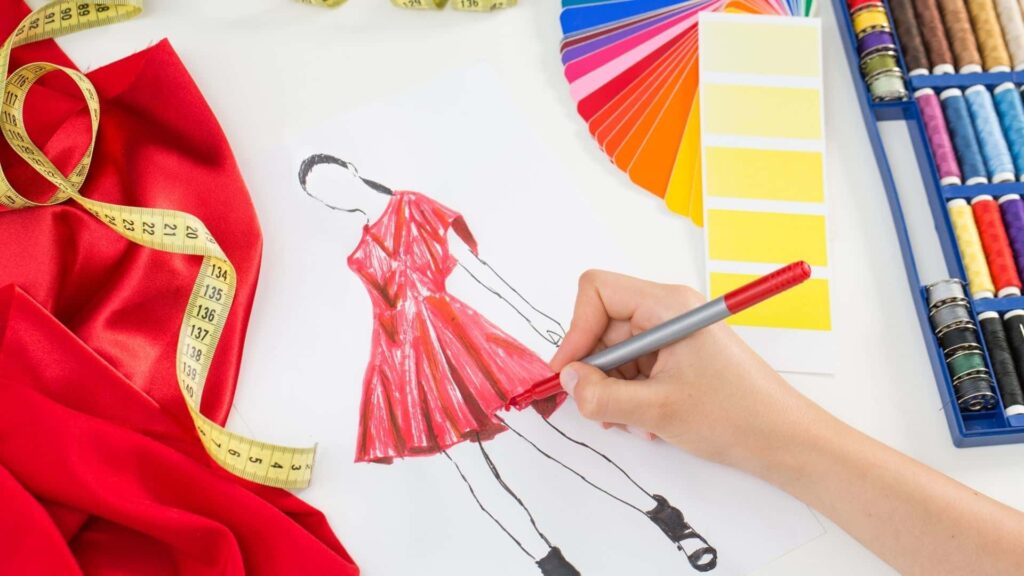The Unveiling fashion design industry in a captivating blend of artistic expression and commercial enterprise. It encompasses the entire process of bringing a garment from conception to the consumer’s closet, encompassing everything from the initial spark of inspiration to the final sale. This article also explores and unveils different aspects of fashion designing industry
Learning about Fashion Design Industry
Before diving into the world of fashion designing industry, many aspiring designers embark on a journey of learning and honing their craft. This can be achieved through various avenues:
Formal Education
Enrolling in a fashion design program at a college or university provides a structured learning environment. Students gain a strong foundation in design principles, sketching, patternmaking, and also the intricacies of textiles which forms a base for their path in fashion designing industry
Online Courses
The digital age offers a plethora of online courses and tutorials, allowing aspiring designers to learn at their own pace and convenience. These courses can cover various aspects of fashion design, from software and technical skills to trend forecasting and also in brand development.
Mentorship
Gaining experience under the tutelage of an established designer can be invaluable. Apprenticeships or assisting roles also provide hands-on learning opportunities and insights into the practicalities of the industry.
The Many Facets of Fashion Designing Industry
Having grasped the fundamentals, aspiring designers can explore the diverse specializations within the fashion design industry:
Haute Couture
The pinnacle of fashion, haute couture refers to exclusive, handcrafted garments made by master designers. This realm of high fashion is known for its luxurious materials, intricate details, and also one-of-a-kind pieces.
Ready-to-Wear:
This segment caters to a wider audience, offering mass-produced clothing designed for everyday wear. Ready-to-wear designers must strike a balance between creativity, marketability, and also production costs.
Fast Fashion
Fast fashion prioritizes speed, affordability and also churning out trend-driven clothing at a rapid pace. Designers in this fast-paced environment must be highly attuned to current trends and adept at translating them into quickly produced garments.
Accessories
While often overshadowed by clothing, accessories play a crucial role in completing a look. Accessory designers specialize in creating handbags, shoes, jewelry, and other items that enhance an outfit.
A Continuously Evolving Landscape
The fashion design industry is dynamic and ever-evolving. Here are some of the key trends shaping its future:
Sustainability
Consumers are increasingly conscious of the environmental impact of the fashion industry. Sustainable practices, such as using recycled materials and ethical production methods, are becoming a priority for many designers and brands.
Technology
Technological advancements are influencing every aspect of fashion design. From 3D printing and digital fabric manipulation to data analytics for trend forecasting, technology is revolutionizing the way clothes are designed, produced, and marketed.
Inclusivity
The fashion industry is moving towards greater inclusivity, catering to a wider range of body types and ethnicities. Designers are creating collections that celebrate diversity and offer a more representative vision of beauty.
The fashion design industry offers a stimulating and challenging career path for creative individuals. By understanding the various facets of the industry, learning the necessary skills, and staying abreast of evolving trends and also aspiring designers can carve their niche in this ever-changing world.
Leave a Reply